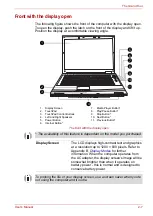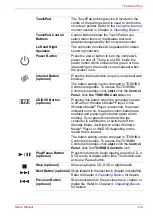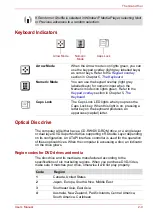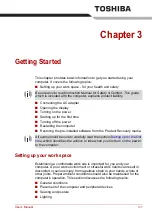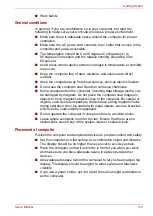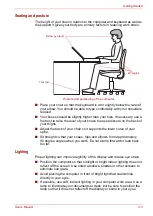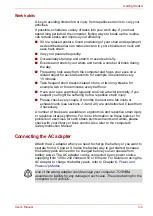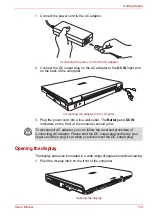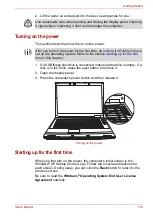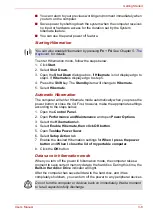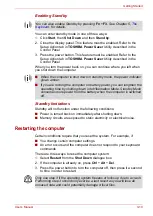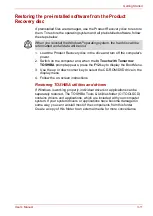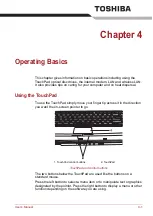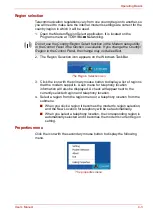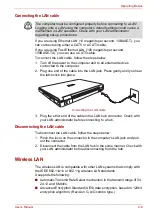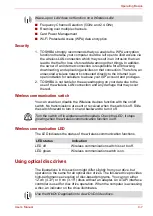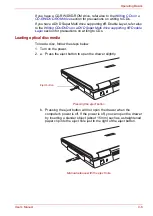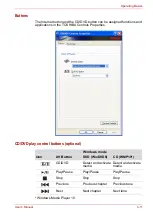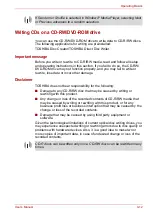
User’s Manual
3-9
Getting Started
Standby mode
In standby mode the power remains on, but the CPU and all other devices
are in sleep mode.
Standby precautions
■
Before entering Standby mode, be sure to save your data.
■
Do not remove/install memory or remove power components:
■
Do not remove/install memory modules - the computer or the
module itself could be damaged.
■
Do not remove the battery pack.
In any of the above cases, the data being maintained by Standby Mode
will be lost.
■
If you carry the computer on board an aircraft or into a hospital, be sure
to shut down the computer in hibernation mode or in shutdown mode to
avoid radio signal interference.
Benefits of standby
The standby feature provides the following benefits:
■
Restores the previous working environment more rapidly than
Hibernation Mode.
■
Saves power by shutting down the system when the computer receives
no input or hardware access for the duration set by the System Standby
feature.
■
You can use the panel power off feature.
■
If the computer is not used or accessed in any way, including areas
such as the receipt of an e-mail, for approximately 15 or 30 minutes
when the AC adapter is connected, it will automatically enter Standby
Mode. This function is the default setting within the TOSHIBA Power
Saver utility.
■
To restore operation, press the power button.
■
If the computer automatically enters Standby mode while a network
application is active, the application might not be restored when the
computer wakes up from Standby.
■
To prevent the computer from automatically entering Standby Mode
you should disable the Standby feature within the TOSHIBA Power
Saver utility. However, please note that disabling this feature will mean
the computer is not longer Energy Star compliant.


